Translation changes depending on the industry and approach. Some main translation types include literal, free, transcreation, localization, and interpretation. These further differ depending on the field, such as marketing, scientific, financial, legal, or literary.
For example, medical translation requires different skills to adapting a novel into another language. Knowing the various types of translation is essential to figuring out the right one for your needs.
In this article, we’ll look at why there are different types of translation, how they differ by approach and use case, how to choose the right type for your content, and how Day Translations can help you.
Why Are There Different Types of Translation?
Translation is not merely about word substitution. Translating a message to another language requires adapting to the medium and context. Allowing room for interpretation and flexibility when translating makes it more accessible and relevant when working in new markets.
Languages differ in grammar and syntax, so word-for-word translation will not suit every situation. Cultures also have subtleties, like metaphors and symbols, that must be adapted to convey the desired meaning. Some fields also have special vocabularies, like science and technology, that require an expert to translate the original content suitably.
While translations can be done differently, approaches are often blended to suit the client’s needs. Translating a message between languages means using the right word or phrase depending on the context. The translation can also differ depending on the similarity between the cultures of the two languages.
Words from the source text can be used in translated materials and still make sense. For example, the Danish word hygge doesn’t have a direct translation into English but is used alongside the translated text. Other times, new expressions can be made in the target language to communicate the desired message, like honeymoon translating to the French lune de miel.
Types of Translation by Approach
There are many types of translation, and each one needs to be approached differently. The kind of translation you choose may be limited by whether you use CAT (computer-assisted translation) tools such as Trados, MemoQ, or Memsource. Here are the main types:
Literal
Literal translations involve replacing each word in a sentence. This means that grammar and context aren’t taken into consideration. Literal translations of full texts sound unnatural or awkward for that reason. This type of translation is useful for single words but isn’t helpful when adapting significant passages.
Free/Sense-For-Sense
Free translation is more flexible than literal translation as it works with whole sentences. This gives translators greater freedom to incorporate cultural differences, reorder phrases, and interpret the language used. Free translation creates more natural and straightforward results compared to literal translation. Sense-for-sense translation works well for preserving contextual meaning, so it is best suited for applications like marketing and poetry.
Audiovisual
Audiovisual translation is the translation of text for film, television programs, documentaries, and video games. The translation process differs depending on whether the end text is used for subtitles, dubbing, or voice-over. Depending on the approach used, the translator must consider factors like timing, lip-syncing, synchronization, and cultural adaptation.
Transcreation
This creative translation allows for a looser adaptation of the source material while upholding the original message’s tone, intent, and style. It incorporates cultural localization for purposes like marketing so that the final result makes sense for the target audience. Advertisers use transcreation so that campaign slogans and taglines can work in different regions and languages.
The Handbook of the Language Industry outlines how transcreation is now “one of the most promising services in the language services industry from an economic perspective and in terms of professional opportunities for individual practitioners.”
Localization
Localization takes into account the specific culture or region of the target audience. More elements require modification to increase readability for readers. These include changing dates, currencies, and broader cultural references. Localization, from websites to software, is used widely to adapt to the market’s linguistic and regulatory needs.
This includes improved cultural awareness, such as symbols and colors, which are interpreted to make them appropriate for the target market. This is unlike transcreation, in which text is dissected and recreated to read naturally and feel familiar to the audience.
Machine Translation & Post-Editing
Machine translation (MT) is achieved with computer programs that can rapidly translate text using algorithms. The drawback of this type of AI translation is that it loses cultural references and context that a human translator will pick up on. This is why machine editing is followed by human post-editing to refine the first draft.
Interpreting
This is the translation of speech in real time to allow individuals to communicate with each other in different languages. While interpreting is different from translation, the two are often connected because they help people connect in their native tongue.
Interpreting requires quick thinking as well as versatility in interpreting messages instantaneously. Interpreters need to be good listeners and communicate messages accurately in two languages. There are different types of interpreting, including:
- Simultaneous: Translating while the speaker is speaking
- Consecutive: Waiting for the person to finish speaking before translating
- Whispered: Speaking quietly to a small group or one person
Types of Translation by Industry or Use Case
Translations change depending on the industry they’re used for and if specialized language or concepts are being adapted. Translators will require different knowledge and expertise to interpret concepts in industries and fields like:
Legal
Legal translators translate documents like contracts, statutes, patents, and court records. They require a detailed understanding of legal terms and concepts in the source and target languages. Legal translation must be exact and accurate, with fewer opportunities for creative interpretation. Literal translation can help legal translators communicate the original intent of the source material while adhering to local regulations.
Medical
This involves medical documents, pharmaceutical information, patient records, clinical trials, and healthcare-related text. Medical translators must know medical terminology, regulations, and procedures to create accurate translations that adhere to industry standards.
This translation requires subject matter expertise and adaptability to translate text for medical professionals and patients. Medical translators often use literal translation to provide accuracy and adhere closely to the original text.
Technical
Technical translation encompasses IT, automotive, manufacturing, engineering, and aerospace, among other fields. Translators must be intimately familiar with the subject matter, specialized terminology, and industry regulations.
This type of translation involves taking complex information and conveying it in an understandable way for the target audience. Technical translators use CAT tools with built-in glossaries to ensure consistency in translating specific terminology.
Literary
Literary translation requires the highest degree of language expertise with a deep understanding of the source text’s style, tone, and cultural sensitivities. This includes everything from drama and novels to poetry and short stories.
Literary translation requires in-depth language skills along with knowledge of the style, tone, and cultural nuances of the original material. This type of translation changes as literary taste shifts and texts are reinterpreted for new generations of readers. Literary translators use different approaches, including free translation and transcreation, to interpret the source material.
Marketing
Marketing translation allows brands to open up to new markets by translating their messages with cultural awareness. Translators must retain the original message but add elements of localization and transcreation so it appeals to the target market.
Marketing translators use localization and transcreation to interpret the meaning of the source material and ensure that the target audience connects with the end text.
Financial
Financial translators work with various documents, such as annual reports, statements, investment reports, and bank reports. Their translation requirements involve proper knowledge of terminology, understanding of regulations in both languages, and flexibility in conveying messages to investors and experts. Financial translators also require literal translation accuracy to adhere to local regulations and closely adhere to the source material.
Scientific
This type of translation includes research papers, academic journals, technical manuals, and laboratory reports. Scientific translation is also divided into categories depending on the domain: biology, chemistry, or physics. Translators in this industry need to be qualified in the subject matter and present complex information and terminology concisely. Scientific translators can use CAT tools to make the translation process efficient and accurate.
Software/Website
Website and software translation involves translating website and program text into other languages to reach a wider audience. Website and software translators use MT, human translation, or a combination. Translation software is available specifically to adapt websites while incorporating SEO best practices.
How to Choose the Right Type of Translation
Finding the right approach for your industry requires understanding the content’s purpose, audience, and goals. Other factors to consider include accuracy, budget, deadline, and cultural awareness. Here’s more in-depth information on what influences your approach:
- Content type: Some content, like technical reports, is MT-friendly, while text using specialized legal or medical language should be translated by a human. Marketing content uses interpretation through localization and transcreation to communicate a message to a new market in a meaningful way.
- Stakes: High-stakes content that is to be digested by consumers or stockholders must be translated skillfully to be accurate, culturally appropriate, and brand-building. Low-stakes content like internal communications needs less polish.
- Target audience: Be responsive to the language ability, cultural understanding, and sensitivity of the target reader. The tone of the translation needs to be attuned to formal or informal contexts. Over 75% of customers said they preferred to view material in their own language, as per CSA Research.
- Budget and time: If you’re short on time and money, MT is a quick and cheap solution, but lacks context and nuance. Human translations are more expensive and take time, but offer higher quality. MT and post-editing provide a compromise for some companies.
- Brand awareness: MT won’t understand the intricacies of brand identity that humans are better equipped to interpret. Localization and transcreation are good options if tone, voice, and overall image are crucial.
Ensuring Translation Accuracy
Alongside choosing the right type of translation, you need to combine human review, useful tools, and feedback loops to get accurate results. Here are some of the steps you should take once you’ve chosen the type of translation:
| Step | Benefit |
| Professional translators | Understanding of both the original and target languages and cultures. |
| Translation tools | Keeps terms, style, and tone consistent across projects through glossaries and translation memories. |
| Review | Editors and proofreaders are crucial for spotting any mistakes and getting a second opinion on phrases that sound unnatural. |
| Quality assurance check | Automated tools catch more minor errors, like typos or formatting issues, that people may miss. |
| Feedback | Local speakers provide an insight into how the intended audience will receive the translation. |
Final Thoughts
Different types of translation are used in various industries. Picking the right approach allows for easy communication between translators and readers. Efficient and appropriate translation bridges cultural gaps and provides global expansion for businesses.
Whether you choose MT or human translation, the quality of the materials is the most critical factor to consider when choosing a translation type. If you want to connect with audiences across industries, get a quote from Day Translations today.
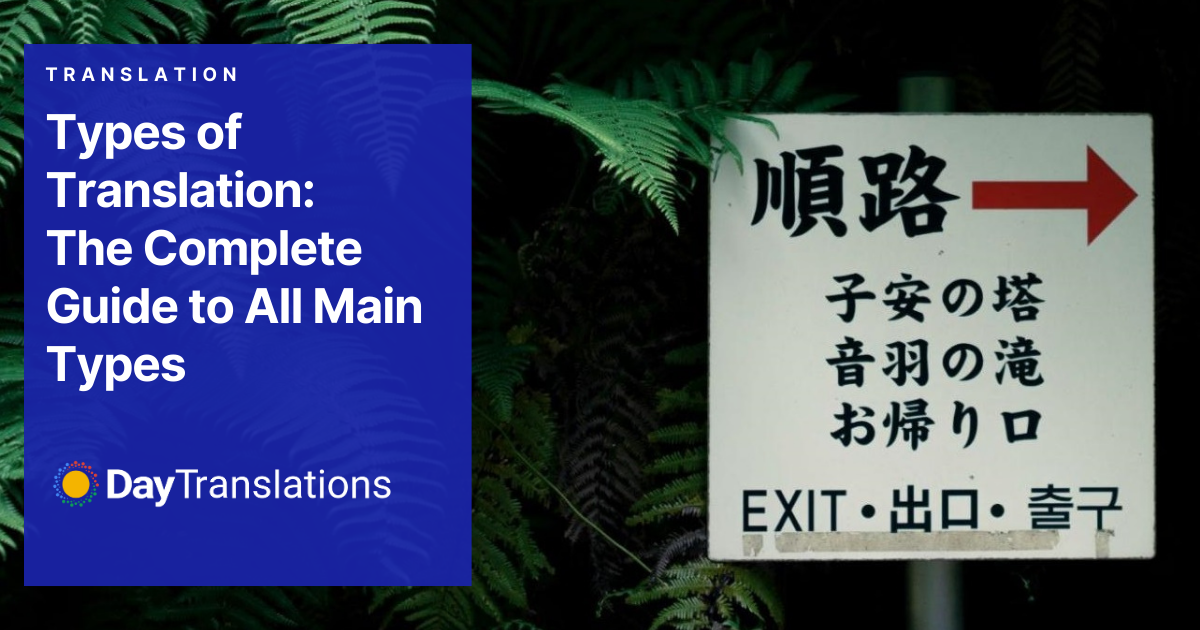


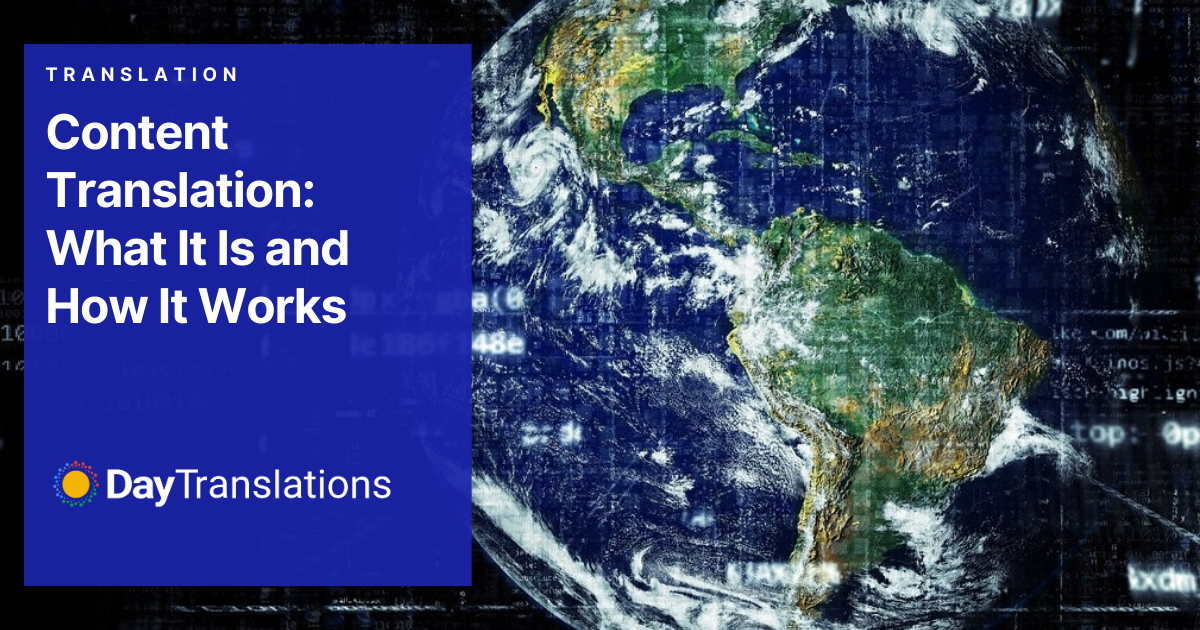
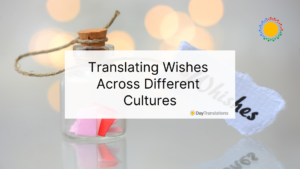

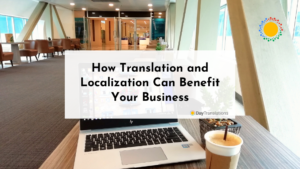
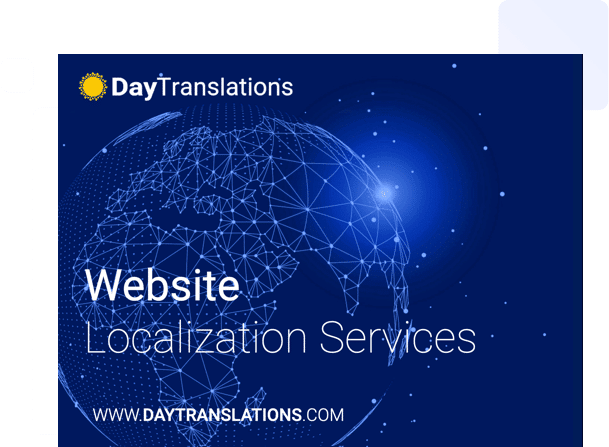






Sorry, the comment form is closed at this time.